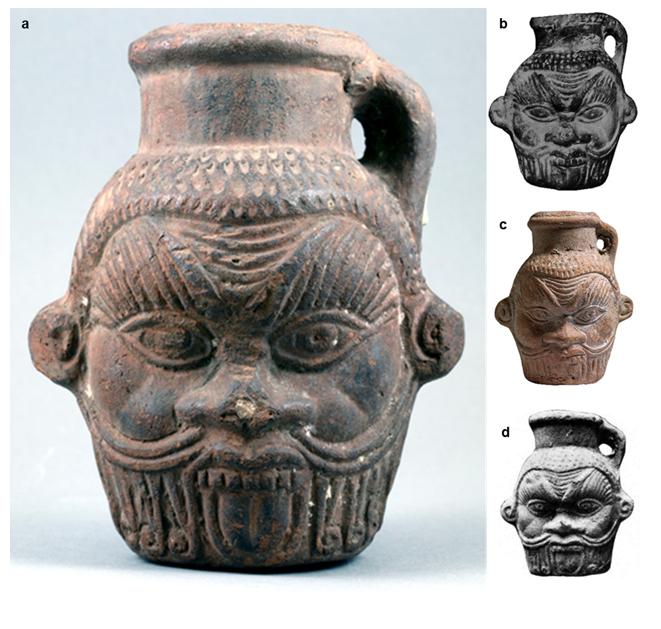
Worshipers of the ancient Egyptian god Bes ingested a mix of psychoactive drugs, human blood, and other bodily fluids in their mysterious ceremonies, according to a new paper.
The 15 authors of the report published on Research Square (prior to any academic peer review), come from institutions including the University of South Florida and the University of Milan. They studied residue found in a previously unpublished millennia-old mug in the shape of the deity, the protector of households, in the collection of the Tampa Museum of Art.
By analyzing proteins and metabolites, using genetic techniques and synchrotron radiation-based Fourier Transformed Infrared microSpectroscopy (SR µ-FTIR), the authors found that the mug contained residues of the psychotropic substances. These included Peganum harmala (also known as harmel or Syrian rue), Nimphaea nouchali var. Caerulea (blue water lily), and a plant of the Cleome genus. They also found evidence of human blood, bodily fluids such as oral or vaginal mucus, and breast milk.
For good measure, the recipe also included traces of sesame seeds, fruit yeast water (probably from grapes), royal jelly, and licorice.
Part dwarf, part cat, Bes was “one of the most fascinating and wildly popular figures of ancient Egyptian religion,” the authors wrote. First depicted as a demon, Bes gradually transformed into a guardian figure until he became, in the Roman era, a divine being that provided protection from danger and averted harm.
Vessels in the shape of Bes played an important part in his cult all the way from the 16th century B.C.E. to the fifth century C.E. This particular example dates to the Ptolemaic-Roman period, from around the third century B.C.E. to the third century C.E, when production of such objects peaked, according to the authors. Scholars have speculated that they may have be used to hold perfume or holy water, wine, or beer, and that cult members may have drunk from them, but residue of their contents has rarely been studied.
No other Mediterranean religion demonstrates the complexity of the one that the Egyptians practiced for three and a half millennia, the authors point out. Sacred texts prescribed a mix of religious, magical, medical, and herbalistic practices.
Branko van Oppen, the Tampa Museum’s curator of Greek and Roman art, is one the paper’s authors. The museum acquired the vessel, which stands less than two inches high, in 1984, through a donation from the collector David S. Hendrick III. He apparently bought it from Cairo’s Maguid Semeda Art Gallery in 1960, and it was said to have been found in the Faiyum region in Egypt, about 60 miles southwest of Cairo, although no documentation seems to support the object’s provenance.
More Trending Stories:
Four ‘Excellently Preserved’ Ancient Roman Swords Have Been Found in the Judean Desert